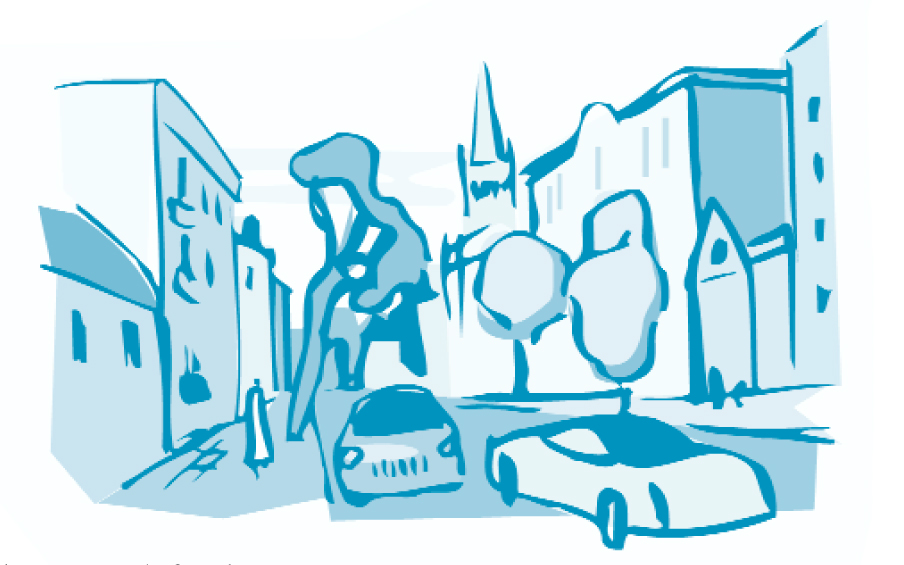Over the past year, hundreds of citizens in my home town of Asheville, NC, have come together to create a list of goals for our region. Higher wages, more affordable housing, cleaner environment, better schools—the vision for our small mountain city is appropriately ambitious.
I applaud this important effort. But the experiences of other cities, large and small, show that working to improve all aspects of our community will probably be self-defeating. In fact, actually letting go of some of our goals would boost our power to reach the ones we value most.
Huh? you might say. Bear with me a few paragraphs—here’s my thinking, strongly influenced by MIT professor Jay Forrester and his “attractiveness principle.”
The Attractiveness Principle
Imagine for a moment that all our goals for Asheville have been met. Suddenly, we have high wages, inexpensive housing, clean air, no traffic congestion, and a stellar Indian restaurant. What would happen next?
People would start moving here even faster than they already are. Some sectors of the economy and community would flourish. But rents would climb, employers could lower wages and still find workers, the roads would fill, and we would eventually return to a balance of things we like and things we don’t.
Just as nature abhors a vacuum, no urban center in a mobile society can remain an overall better place to live for long. By one path or another, changes that improve the attractiveness of one city will result in compensating changes that lessen its attractiveness until it is generally as appealing as other places.
Consider how other cities naturally provide “bads” to balance the “goods.” Atlanta, Los Angeles, and Charlotte have traffic and smog and long commutes to balance the higher-paying jobs and big city perks. Rural Vermont, Montana, and Wisconsin have cold winters and few jobs to balance the open space, inexpensive housing, and clean air. From my perspective, Asheville has expensive housing, low wages, and dirty air (i.e., high surface ozone levels) to balance the inspired culture, low traffic congestion, walkable downtown, high-quality art, accessible mountains, incredible views, beautiful rivers, deep heritage, and easy-going pace of life.
This thinking might sound fatalistic, as though no one should try to improve their hometown. But accepting this principle actually could give us more power to shape our future. If we embrace the “unattractiveness” that we can live with, we make space for something else to get better. Sounds odd, but others do it. People in Seattle tolerate (and even advertise) eight months of rain to balance their hot economy. New York City folks deal with each other acting a bit rudely to gain all that is the Big Apple. Portland, OR, citizens accepted higher rents and population densities when they created an urban growth boundary to preserve open space. I heard that people in Jackson Hole, WY, refused to expand their heavily congested highway, accepting delays over sprawl. Some folks even fight against repairing potholes in the road, knowing it will slow traffic.
Difficult Choices
So what kind of imperfection are we willing to live with? Dirty air? No? Then we will need to choose something else. High rent? A slow development permitting process? High taxes? Mediocre schools? Strict land-use laws? Few jobs? Development fees? Choose, or the urban system, like it or not, will choose something for us.

As for me, at the gut level I’d rather not choose. When I look at my infant son and toddler daughter and imagine them raising kids here in Asheville in the 2030s or so, I find myself wanting to tackle all the problems without much thought to the likely side effects. Letting go is easier said than done, even when my rational mind knows it would help.
Then what will it take to actually make these kinds of difficult choices? We need to ask ourselves several difficult questions about the thinking I have laid out here. Does the “attractiveness principle” really apply to us? Are other cities’ experiences relevant? If we conclude that, in the long term, there is no way to “have it all,” then we might explore what we are willing to let go in order to reach the goals that matter most. The ensuing discussion would boost our power to shape our community for ourselves and future generations. Our children will ultimately thank us for our foresight and courage.
Andrew Jones (apjones@alum.mit.edu) and his colleagues at Sustainability Institute (www.sustainabilityinstitute.org) run workshops and consulting projects using systems thinking and system dynamics simulation modeling.
